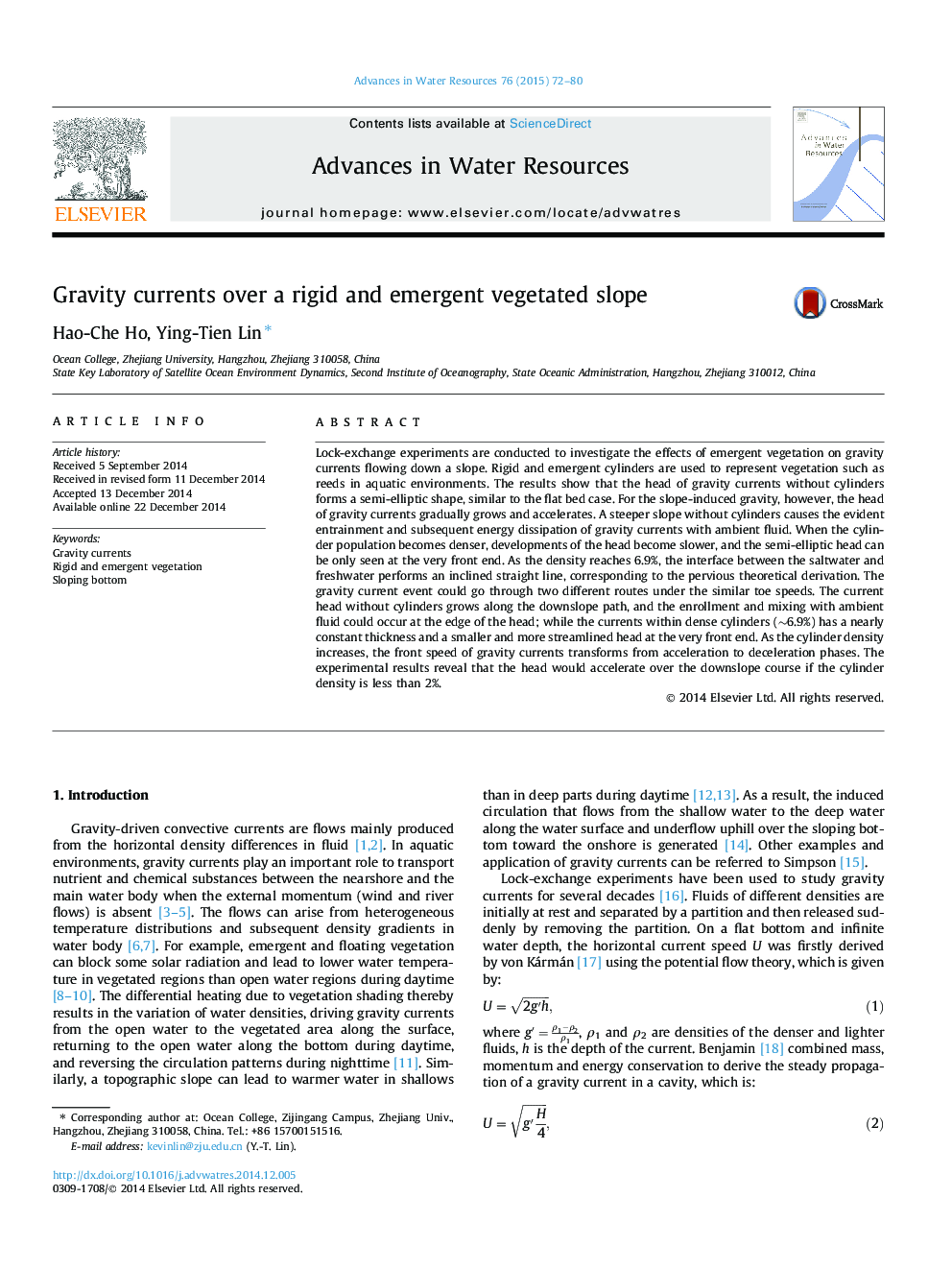| Article ID | Journal | Published Year | Pages | File Type |
|---|---|---|---|---|
| 4525509 | Advances in Water Resources | 2015 | 9 Pages |
•Lock-exchange experiments over a slope are conducted for gravity current patterns.•The current head without cylinders presents a semi-elliptic shape as the flat bed case.•The dense cylinders can delay the head developments and reduce the fluid entrainment.•The cylinder drag reduces the current speed and changes the flow structure.•The current head down a slope would accelerate if the cylinder density is less than 2%.
Lock-exchange experiments are conducted to investigate the effects of emergent vegetation on gravity currents flowing down a slope. Rigid and emergent cylinders are used to represent vegetation such as reeds in aquatic environments. The results show that the head of gravity currents without cylinders forms a semi-elliptic shape, similar to the flat bed case. For the slope-induced gravity, however, the head of gravity currents gradually grows and accelerates. A steeper slope without cylinders causes the evident entrainment and subsequent energy dissipation of gravity currents with ambient fluid. When the cylinder population becomes denser, developments of the head become slower, and the semi-elliptic head can be only seen at the very front end. As the density reaches 6.9%, the interface between the saltwater and freshwater performs an inclined straight line, corresponding to the pervious theoretical derivation. The gravity current event could go through two different routes under the similar toe speeds. The current head without cylinders grows along the downslope path, and the enrollment and mixing with ambient fluid could occur at the edge of the head; while the currents within dense cylinders (∼6.9%) has a nearly constant thickness and a smaller and more streamlined head at the very front end. As the cylinder density increases, the front speed of gravity currents transforms from acceleration to deceleration phases. The experimental results reveal that the head would accelerate over the downslope course if the cylinder density is less than 2%.
